"There is no weather that can't be ridden in, only electric bicycles with low-level functions." In Europe and the United States, where cycling culture prevails, rainy weather is usually accompanied by extreme weather but cycling is still actively going on.
Having said that, both novice and experienced riders should pay attention to some safety matters and riding skills when riding an electric bike in the rain. We should never forget that safety is the first element of riding.
We all know that riding an electric mountain bike is good exercise. Here we will summarize the safety tips and preparations before riding in the rain. Follow the directions if you are thinking of riding in winter or the rainy season. You can experience the diverse beauty of the outdoors.
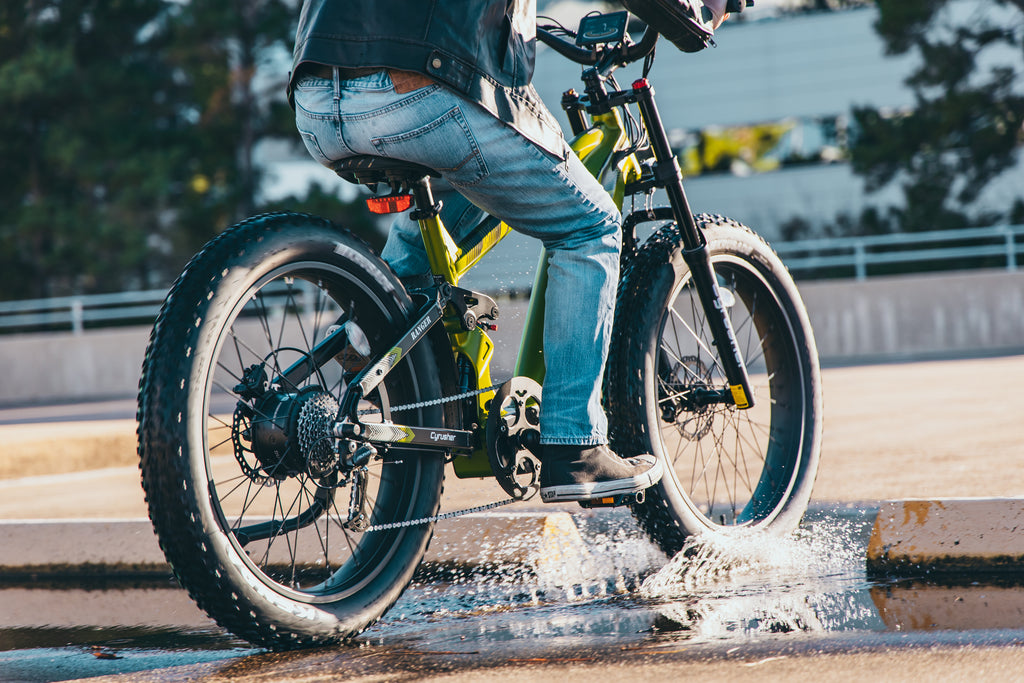
Can you ride an electric bike in the rain?
The answer is: of course. No matter what kind of inclement weather it faces, a powerful e-bike can go wherever it pleases. It also provides you with comfort, safety and stability while riding. So, riding in the rain is no problem at all. However, make sure your e-bike has passed the safety test.
Specifically, the Cyrusher electric fat bike has passed the international quality test and meets the standards of CE, UL, Rhos and FCC. The waterproof level test of the battery has reached IP65. This means it's perfectly fine to ride or temporarily park your e-bike when it's raining.
But it is worth reminding you that we should also avoid riding in deep puddles or standing water which will damage some electronic components such as batteries and motors. Although the battery is waterproof and can withstand low-pressure spray from any angle, it is not allowed to be submerged in water for a long time.
Once flooded, the battery line will be eroded which will likely cause accidents such as spontaneous combustion, threatening the rider's life. This is the last scenario we want to see. It is best to avoid waterlogged roads or deep puddles. If unavoidable, please pass through them quickly! After all, replacing batteries or motors is also an expensive outlay.
Can electric bikes get wet from rain?
The answer is yes, they can. Most electric fat bikes on sale are waterproof, which means you can ride them in the rain or park them temporarily with no problem. But like many metal products, they don’t like being rained on. Rain can cause metal parts to rust and can damage electrical components.
So, keep your bike dry at the end of your ride. If the forecast says it's going to rain, it's best to park your electric bicycle in a dry shady place such as a garage, a rain shelter or indoors. Please don't park your electric-assist bike outside for long periods!
Before we start riding electric mountain bikes in the rain, let's look at some essential tips and tricks to make your ride safer and more accessible.
1. Put on the bicycle fenders
The mudguard helps block mud, sand, water, etc. that’s thrown up by the tires during rotation and can keep the vehicle and your clothing tidy. In addition to keeping everything clean, it also prevents the rider from getting wet, thus maintaining body temperature.
While most components of an e-bike can withstand splashes of mud and water, and a quick splash won't shut down the battery, it's a good idea to have mudguards on your vehicle when riding in the rain.
It keeps the rider and the vehicle neat and improves riding comfort. It can also reduce the intrusion of mud and water into the transmission, brakes and lighting systems.
The current mainstream fender specifications are divided into traditional full-size, clip-on and MTB-specific fenders. You can buy them according to the existing model design and mudguard effect you want.
2. Wear layers of clothing
Getting wet is unavoidable when riding in the rain. So, remember to wear layers that are easy to put on and take off while cycling. As the temperature rises during your ride, you can wear several layers of lighter clothing and use a light rain jacket or waterproof jacket as a top layer for mobility and ease of donning and doffing.
The body can stay warm during the ride, but the hands will feel stiff from the rain and cold temperatures. This will affect operating the brakes and drivetrain, which is not good news. You should also wear waterproof and warm cycling gloves to keep your hands warm. Only completely waterproof equipment can better cope with low temperatures and rainwater.
Bicycle glasses can help you improve your eyesight and prevent excessive rainwater from entering your eyes and affecting driving safety. Just wipe them gently with your hands and the rain on the lens will slide off. It is worth noting that you should avoid choosing dark lens colors.
3. Lighting is the safety guarantee for riding in the rain
Rain affects not only the rider's line of sight, but also that of pedestrians and car drivers. Headlights and taillights on bicycles have become even more essential to make the rider more visible in the rain.
Using an electric mountain bike for urban commuting, you will share the road with many vehicles. Visibility in rainy days is low which can make it difficult for some to spot riders.
Cyrusher electric bicycles are equipped with high-power front lights and brake tail lights. If you’re riding during low visibility, you should use these lighting systems so that pedestrians and car drivers can see you and ensure riding safety.
The brand's newly upgraded Ranger and Ovia have reflectors installed on the spokeswhich can reflect bright and clear light when illuminated, allowing drivers in front or behind to notice riders. You can also paste reflective strips on your clothes or on the tail of your bicycle, which will significantly improve your safety when riding in the rain.

4. Slow down and brake early
Electric mountain bikes offer more variety than regular bikes because high-power motors provide more power to improve the riding experience. However, please don't cruise at high speeds when riding in the rain. Especially around bends or in areas with heavy traffic, you need to pay extra attention to the motor power.
When approaching a corner, slow down and minimize the lean into the corner. This helps the tires to stand smoothly on the ground and reduces the possibility of falling. Like when driving a car, rain can make the ground slicker and you must go slower than average to navigate corners safely.
Many e-bikes use hydraulic disc brakes instead of less effective mechanical brakes. Most of Cyrusher's electric fat bikes feature large dual hydraulic disc brakes that are responsive and effective so they can stop in time in an emergency.
But remember to brake in advance when riding an electric bike in the rain. Rain makes the ground slicker, making the journey more dangerous. Because of inertia, the braking distance in the rain will be longer than usual. Therefore, you must brake earlier when riding in the rain.
5. Check tires and tire pressure
When cold weather comes or rain starts to fall frequently, we'd better choose fat tires to get better grip and reduce the possibility of skidding. Before and after riding, you should check whether there is grit, mud and dust attached to the tires from the last journey and clean them right away. You'd better check if there are cracks in the tires. After all, changing tires in the rain is a bad thing.
Cyrusher electric mountain bikes feature puncture-resistant fat tires with improved grip and traction, enough to handle the harshest weather and the most challenging terrains. Fat bikes can take you through them all, whether it's slippery gravel, muddy trails or loose snow.
Riding in the rain can adequately reduce the tire's air pressure and increase its contact area, thereby improving ground traction. It also improves riding comfort. These unique-looking bikes are eye-catching and enhance the fun of riding.

6. Plan a safe cycling route
Before you start riding, plan a safe and familiar route. If some gravel, loose stones or puddles of unknown depth are on the way, you can avoid these dangerous areas when riding in the rain. This guarantees your safety and protects the bike from foreign objects and other hazards. Be aware that in low-visibility weather, you can't always spot and dodge things in time.
7. Do a big cleaning after riding
Riding in the rain means dealing with mud, dust and gravel. After every ride, take a few extra minutes to give your bike a big clean up. This is of considerable benefit to keeping it running for many years.
We can use a soft sponge to remove caked on mud from the frame, saddle and other components. Then dry the bike with a clean, soft towel to prevent rusting of metal parts or soaking of electrical components.
Remember to clean your chains after riding in the rain to prevent rain from eroding them. It is worth noting that you must add lubricant when the chain is free of moisture. If there is still water left behind, there will not be able to lubricate. This will both waste the lubricant and fail to provide protection.
In addition, lubricating oil should be added to other active parts for maintenance. Although an electric fat bike is a convenient and economical personal mobility product, it also requires regular and meticulous cleaning and maintenance after the ride to increase its service life and reduce the rider's financial expenditure.

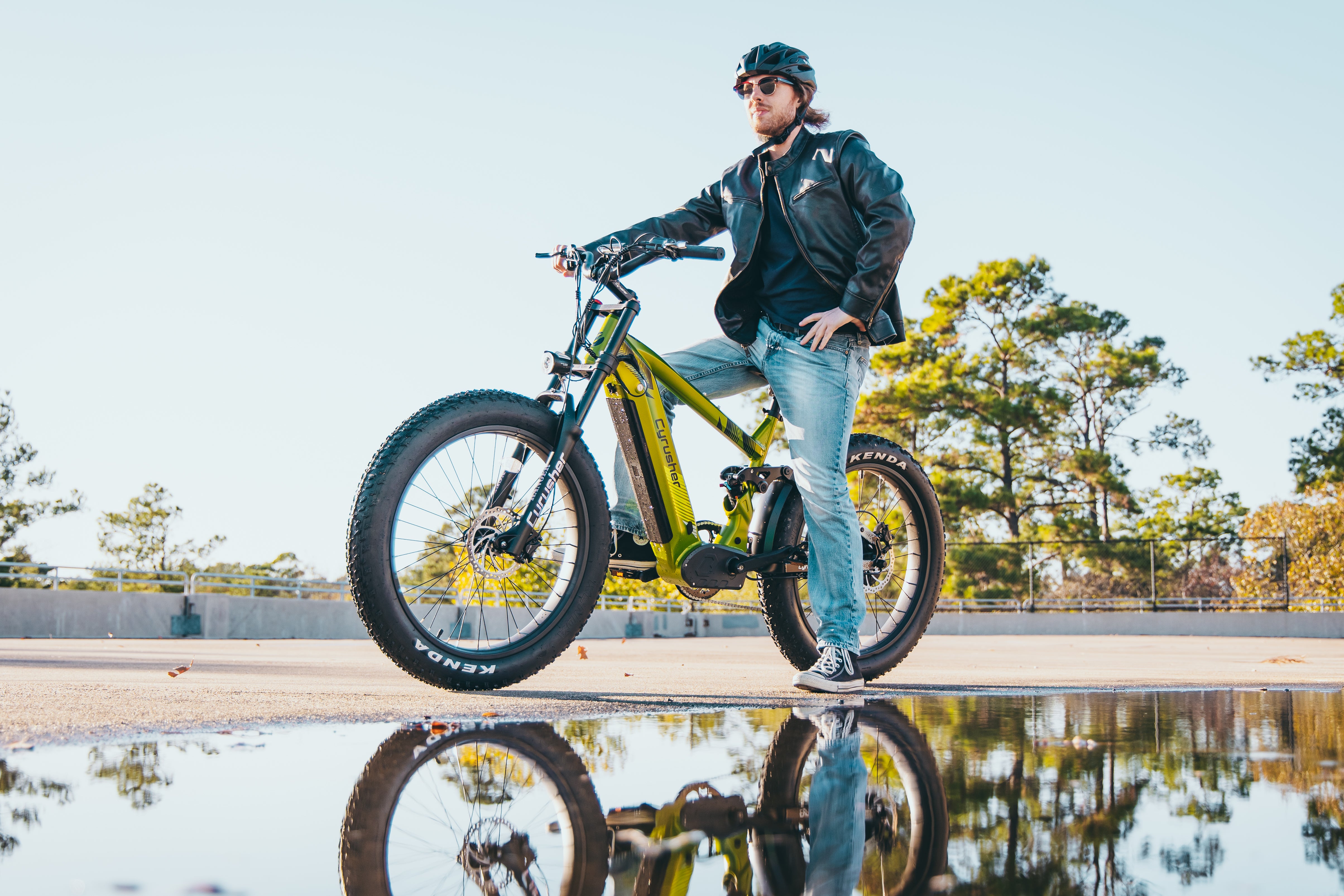

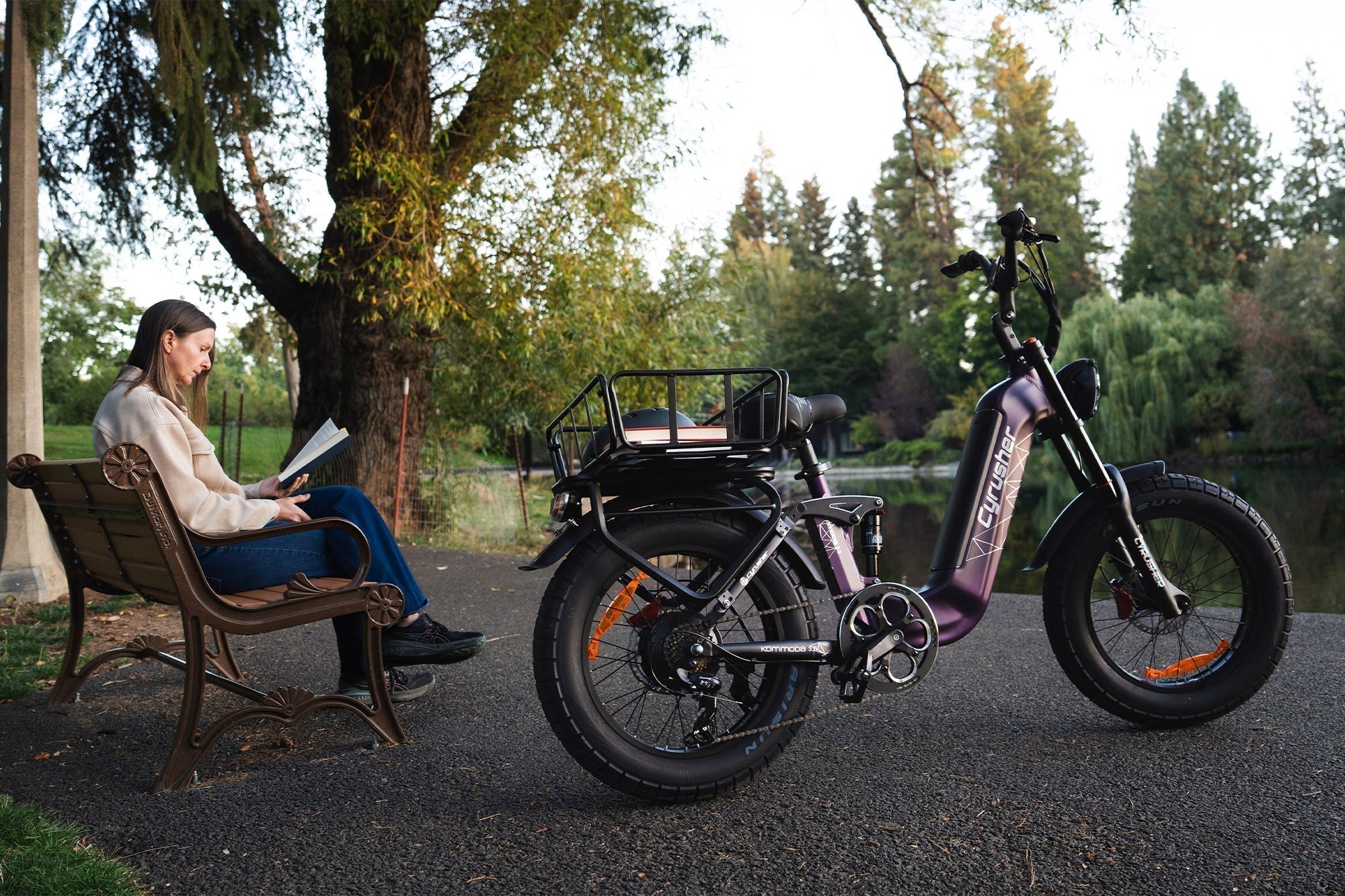
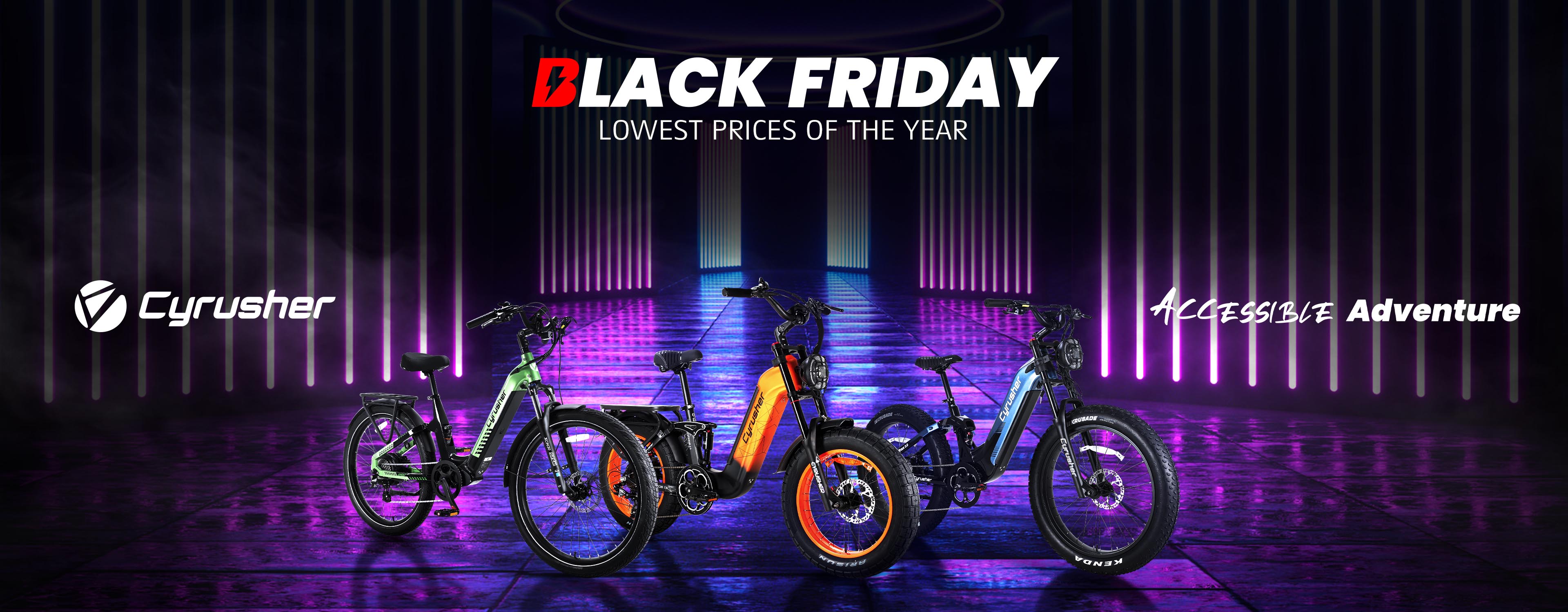
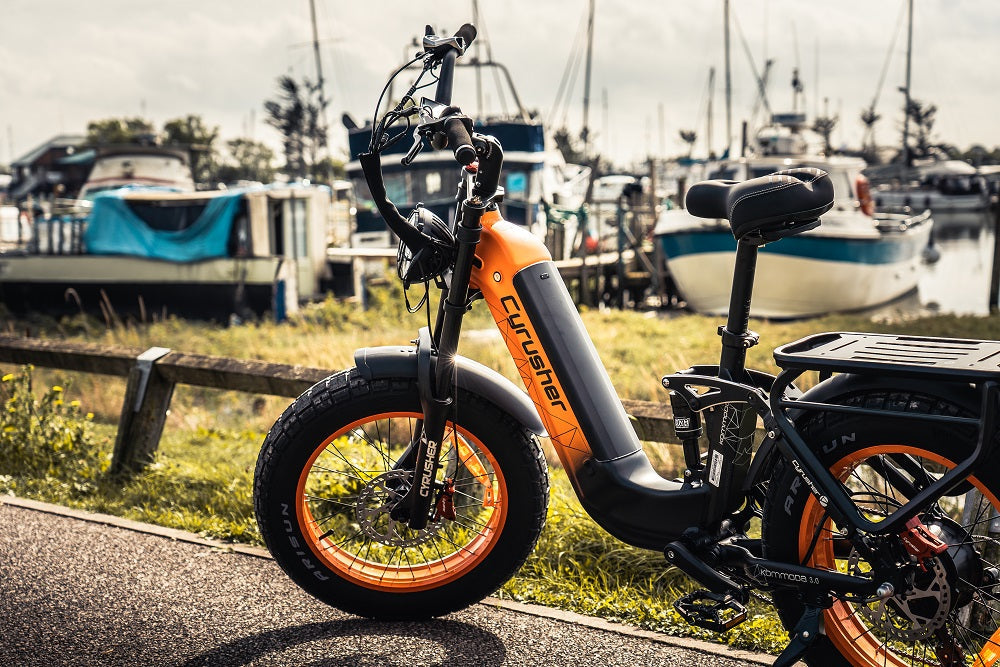

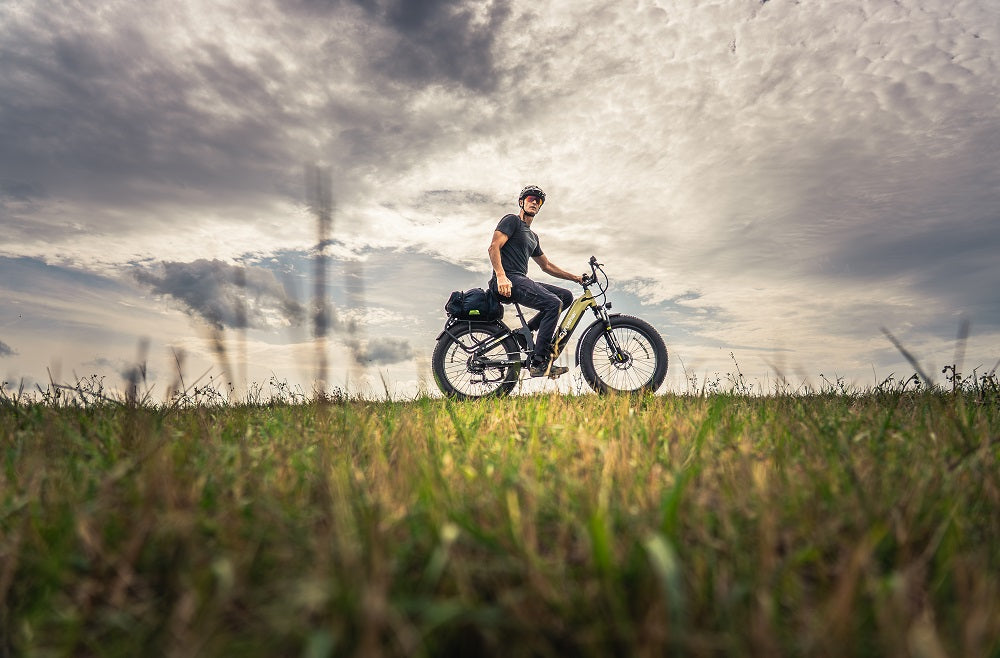
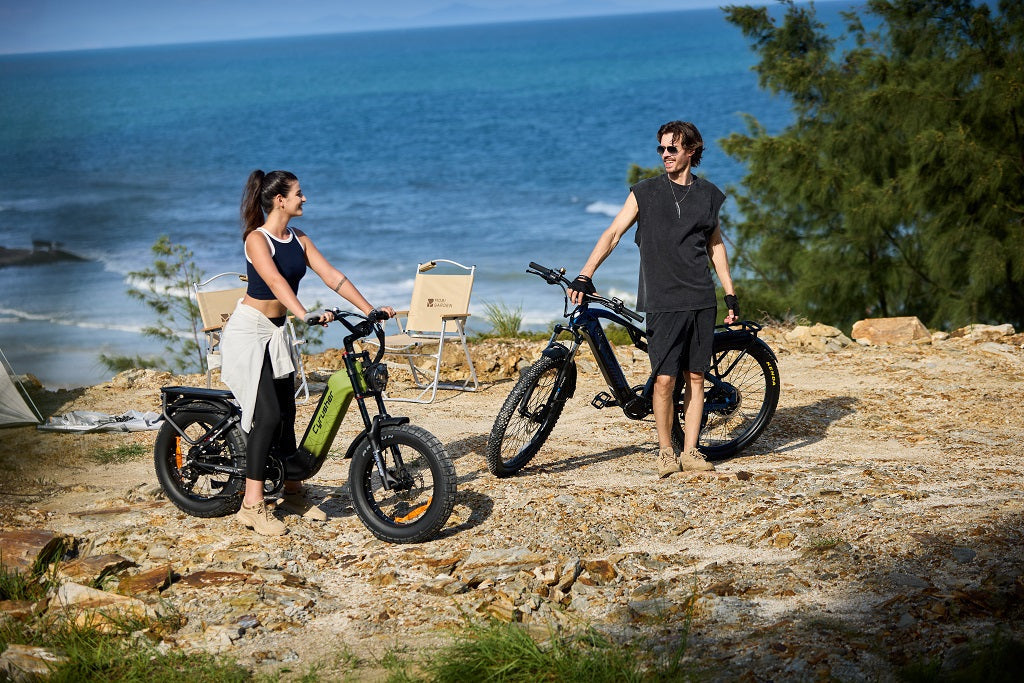
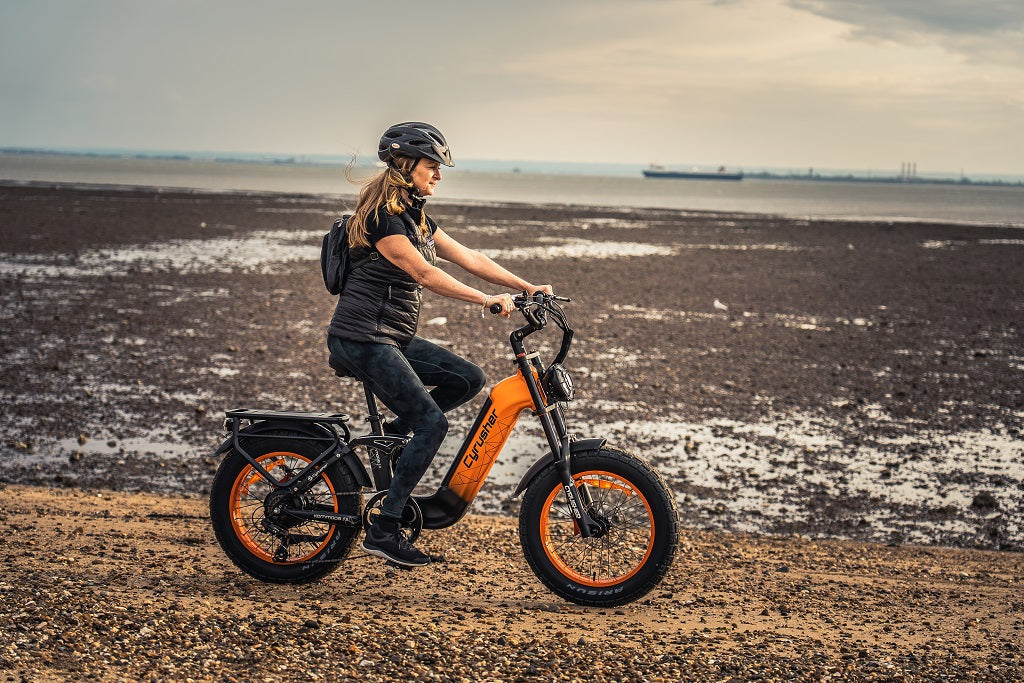
Share:
Why are Electric Bicycles Becoming More and More Popular?
Cyrusher at CES 2023: Electrification Changes the Future of the Industry